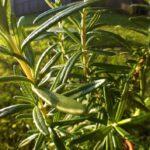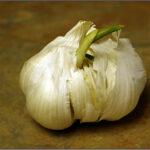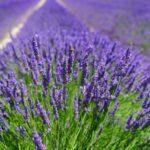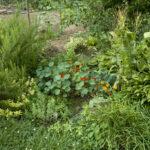Wasabi is a popular condiment that has become a staple in Japanese cuisine. It is known for its strong and pungent flavor, which is often used to enhance the taste of sushi and sashimi. The decision to grow wasabi can be a rewarding experience, as it can be challenging to find fresh and authentic wasabi outside of Japan. In this guide, we will discuss the steps involved in growing wasabi and offer tips on how to care for your plants to ensure a bountiful harvest.
Steps to Grow Wasabi
Step 1: Choose the Right Location

Wasabi is a shade-loving plant that prefers cool and humid environments. When choosing a location to grow your wasabi, look for a spot that receives filtered sunlight or is shaded for most of the day. A temperature range of 8–20°C (46–68°F) is optimal, and the air should be moist, with a relative humidity of 70–80%. Wasabi also requires good drainage, so avoid planting it in areas prone to flooding.
Step 2: Prepare the Soil
Wasabi thrives in well-drained, nutrient-rich soil that is slightly acidic with a pH range of 6.0–6.5. You can amend your soil with compost or organic matter to improve its quality. Mix the compost into the soil to a depth of 30–40cm (12–16in) to ensure that the roots can penetrate deep into the soil. Avoid using chemical fertilizers, as they can damage the delicate root system of wasabi.
Step 3: Obtain Wasabi Starts
Wasabi is typically propagated from rhizomes, which are available from nurseries or online retailers. When selecting wasabi starts, choose healthy and disease-free rhizomes that have a diameter of at least 2.5cm (1in). You can also grow wasabi from seed, but this is a more challenging and time-consuming process that requires specific growing conditions.
Step 4: Plant the Wasabi Starts
Plant the wasabi starts in the prepared soil, spacing them 30cm (12in) apart. Plant them at a depth of 5–10cm (2–4in), with the crown of the rhizome slightly above the soil level. Cover the plants with a layer of mulch or other organic matter to help retain moisture and regulate the temperature of the soil.
Step 5: Watering and Fertilizing
Wasabi requires consistent moisture to thrive, so keep the soil evenly moist throughout the growing season. Use a drip irrigation system or a watering can to water the plants, being careful not to overwater or let the soil dry out completely. Apply a natural, slow-release fertilizer once a month during the growing season to provide your wasabi plants with the nutrients they need to grow healthy and strong.
Step 6: Control Pests and Diseases
Wasabi is susceptible to a range of pests and diseases, including slugs, snails, aphids, and fungal infections. You can control these issues by using organic methods such as handpicking or applying natural insecticides and fungicides. Regularly inspect your plants for signs of damage and treat any issues promptly to prevent them from spreading.
Step 7: Harvesting and Storage
Wasabi is typically ready for harvest in 18–24 months, depending on the growing conditions and the size of the rhizomes. When the leaves of the plant start to turn yellow, it is time to harvest the rhizomes. Carefully dig up the rhizomes, being careful not to damage the delicate root system. Wash the rhizomes and store them in the refrigerator or freezer until you are ready to use them.
Growing wasabi can be a rewarding and challenging experience, but with the right growing conditions and care, you can enjoy a bountiful harvest of fresh and authentic wasabi. Remember to choose a shaded and moist location, prepare the soil with organic matter, obtain healthy starts or rhizomes, and provide consistent moisture and nutrients to your plants. Also, be sure to control pests and diseases and harvest your wasabi when the leaves start to turn yellow. With these tips, you can grow your own wasabi and enjoy its pungent and delicious flavor in your favorite Japanese dishes.
Keywords: grow wasabi, wasabi plant, wasabi starts, wasabi care, growing conditions, wasabi rhizomes, wasabi harvest, wasabi storage, organic gardening, Japanese cuisine, how to grow wasabi, tips to grow wasabi, steps to grow wasabi, grow wasabi in the garden, why grow wasabi
Check out Little Tree Food Forest for articles on food forests and homesteading.
Check out StoryScapes for articles on creative writing.
Related Content
Related Content
Subscribe to our newsletter to get information delivered to your inbox on edible landscaping, growing food and medicinal plants, growing mushrooms, foraging, fermentation, food preservation, raising small livestock, and more.















2 thoughts on “How to Grow Wasabi”
Comments are closed.